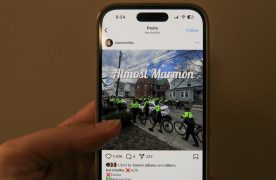
BuzzFeed News spurred an impassioned Twitter storm Friday when it reported that Twitter would change its algorithm as early as this week. The report prompted a flood of tweets containing #RIPTwitter, a hashtag that trended over the weekend and through the week. The hashtag is being used as a mouthpiece to vocalize Twitter users’ anger against the social media platform’s new Trust and Safety Council, which was created to stem online abuse.
Twitter’s new algorithm plans to introduce a new timeline that will reorganize tweets according to what the system predicts users would like to read, in contrast to the live timeline that has become the signature feature of Twitter. The live timeline is not only a staple in Twitter’s fame, but is also the basis for live-tweeting and conversations via the social platform, all of which #RIPTwitter users say are essential to the Twitter experience.
However, the new algorithmic timeline essentially operates by tailoring the user’s experience based on past information provided, whether through read, tweeted or retweeted tweets, combined with information of similar users.
John Byers, a professor of computer science at Boston University, explained some of the basics behind Twitter’s computing concept.
“Twitter is probably compiling read, tweeted and retweeted tweets, building a corpus about you, a body of information personalized using technology known as ‘recommender systems,’” he said.
Byers cited Netflix’s compilation of information on the movies and programs users have watched as an equivalent to Twitter’s algorithmic timeline. The information that these platforms generate is then used to generate recommendations from similar profiles of like-minded people.
Despite the backlash from Twitter users, the new structure may not be a huge disturbance to its normal function.
“Filtering and assorting the timeline have been in works and debated over for a long time — months, if not a year,” said Jacob Groshek, a professor of emerging media studies in BU’s College of Communication. “I don’t think it will be a game-changer. I don’t personally think a lot of people on it will be negatively impacted.”
Groshek said an algorithmic timeline might burden heavy Twitter users who rely on an unfiltered feed. However, he said, that there is “always a tension between an information bubble and having things you’re not cued in pass you by.”
In fact, Groshek said that the algorithmic timeline might be a good thing for Twitter.
“[It] may make it more marketable, reaching users with specific interests,” he said.
Amid the frenzy of Twitter timeline’s looming “death,” many misconstrue what Twitter actually has planned. The switch from a reverse-chronological timeline to the algorithmic timeline is simply a renovation that expands the “while you were away” feature introduced in early 2015. Twitter’s algorithmic timeline will use the same computing principles to bring the most relevant tweets to the top. Most importantly, while this timeline will serve as the default for the new Twitter, users can opt out in favor of the old timeline.
In response to the enflamed reactions, Jack Dorsey, CEO of Twitter, tried to calm the concerns on Friday afternoon.
“We never planned to reorder timelines next week,” he tweeted. “We’re going to continue to refine [the live stream] to make Twitter more, not less, live!”
Several Boston-area students acknowledged the pros and cons of Twitter’s new format.
Jennifer Kim, a first-year graduate student at Tufts University said she is relatively new to Twitter and prefers seeing tweets in chronological order rather than a relevance-based order.
“If I see a popular article from a few weeks ago and kind of still popular now, and losing relevance, I don’t think I’d click on that,” she said. “I’d like to be updated with the most recent news.”
Andreas Xenopoulos, a sophomore in COM, said he is open to Twitter’s new format.
“The changes that they made don’t make that much of a difference because I’ll just go on and scroll through,” he said. “I think it’s good that they change it and update it. Change is good, I think. I’m not opposed to it.”











